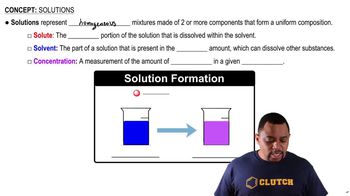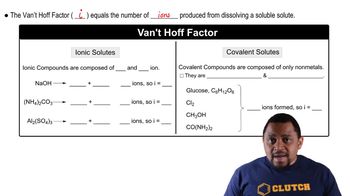Here are the essential concepts you must grasp in order to answer the question correctly.
Isotonic Solutions
An isotonic solution has the same osmotic pressure as another solution, typically physiological saline (0.90% NaCl). This means that the concentration of solutes is balanced, preventing net movement of water across cell membranes, which is crucial for maintaining cell integrity and function.
Recommended video:
Van't Hoff Factor (i)
The van't Hoff factor (i) indicates the number of particles a solute dissociates into in solution. For ionic compounds like KCl, which dissociates into K+ and Cl-, the van't Hoff factor is 2. However, in this case, a factor of 1.9 is used, accounting for ion pairing in solution, which affects colligative properties.
Recommended video:
Percent Mass to Volume Concentration
Percent mass to volume concentration is a way to express the concentration of a solution, calculated as the mass of solute divided by the volume of solution, multiplied by 100. This measurement is essential for preparing solutions with specific osmotic properties, such as isotonic solutions, to ensure proper physiological function.
Recommended video:




